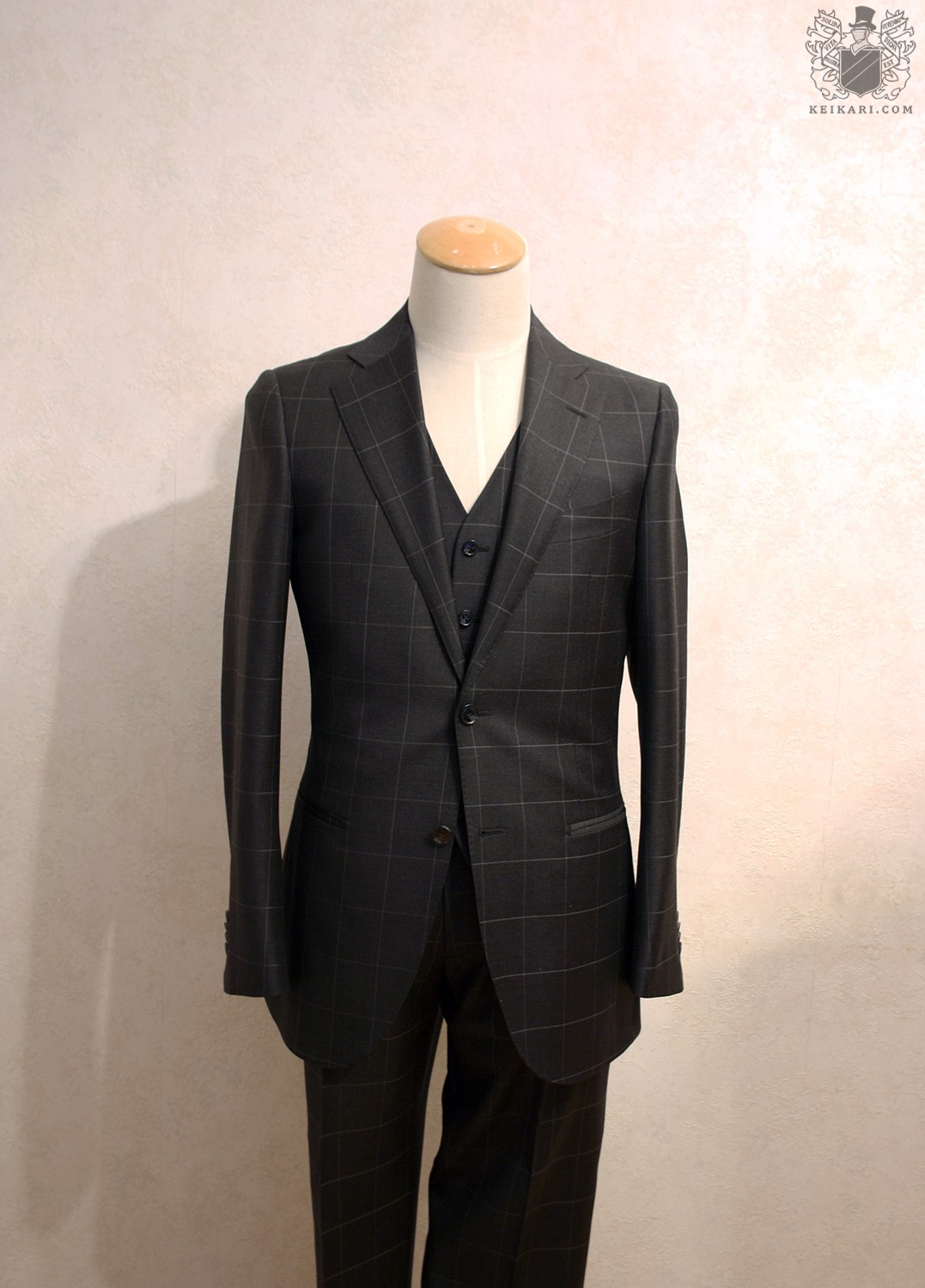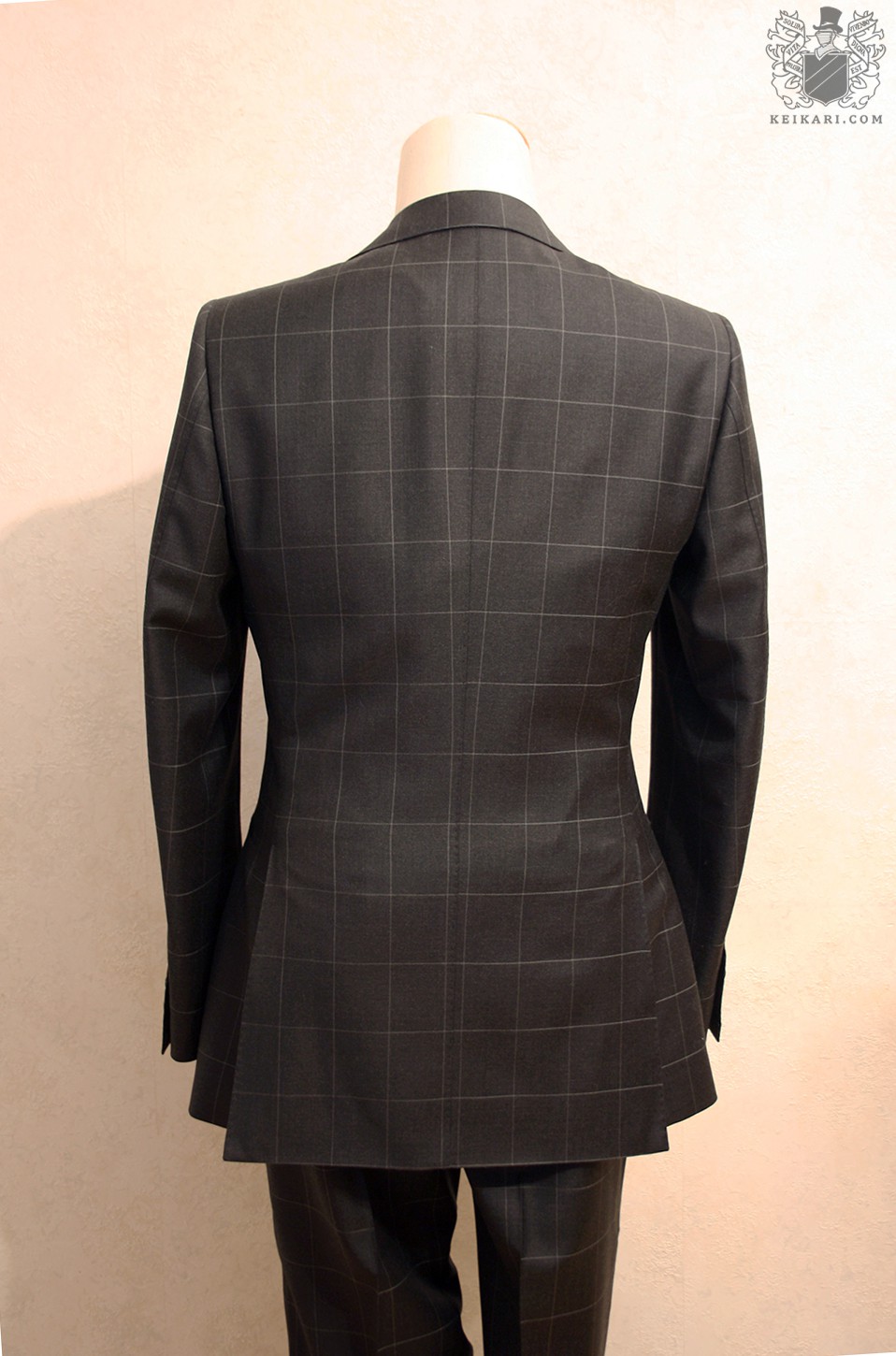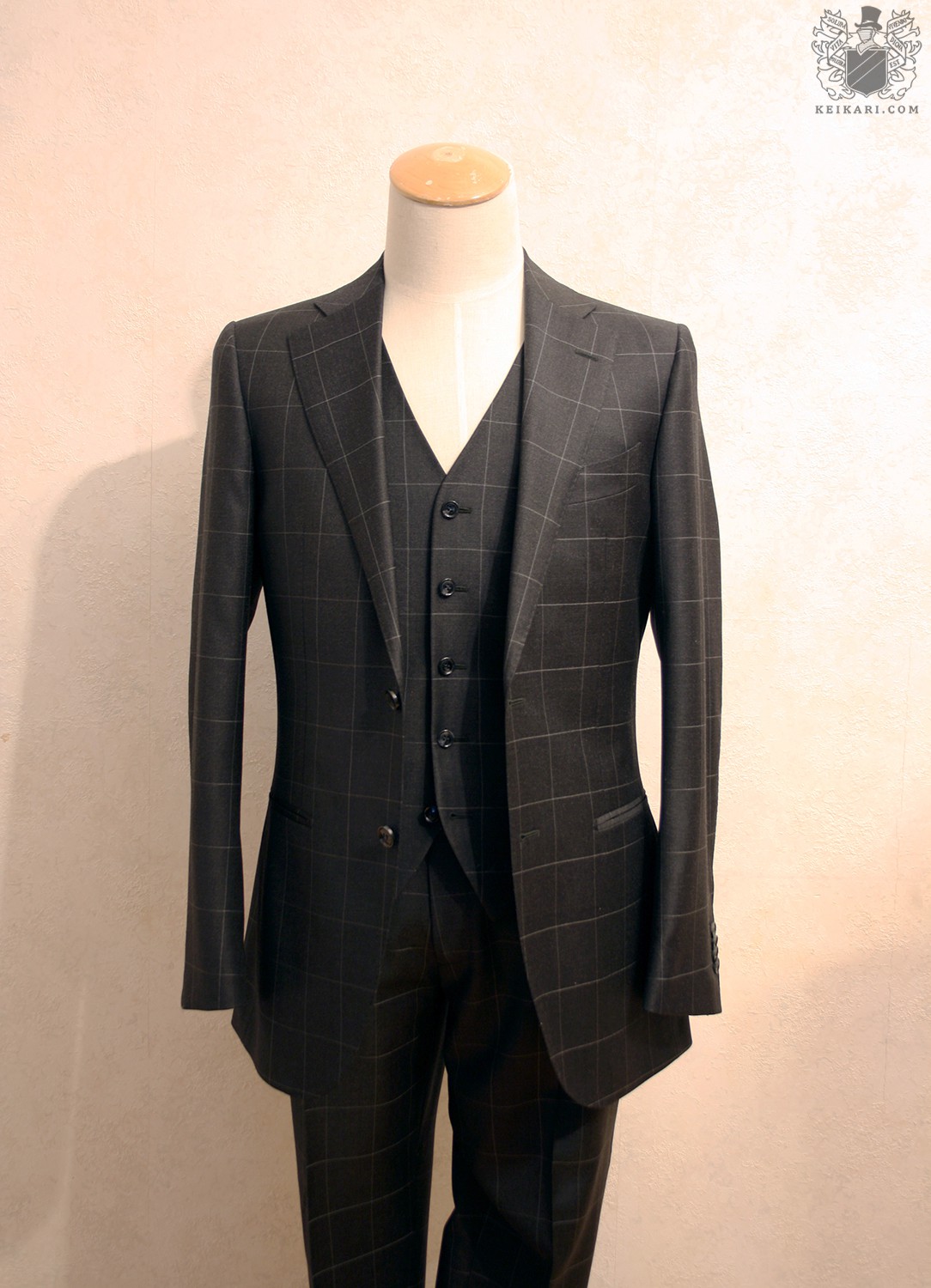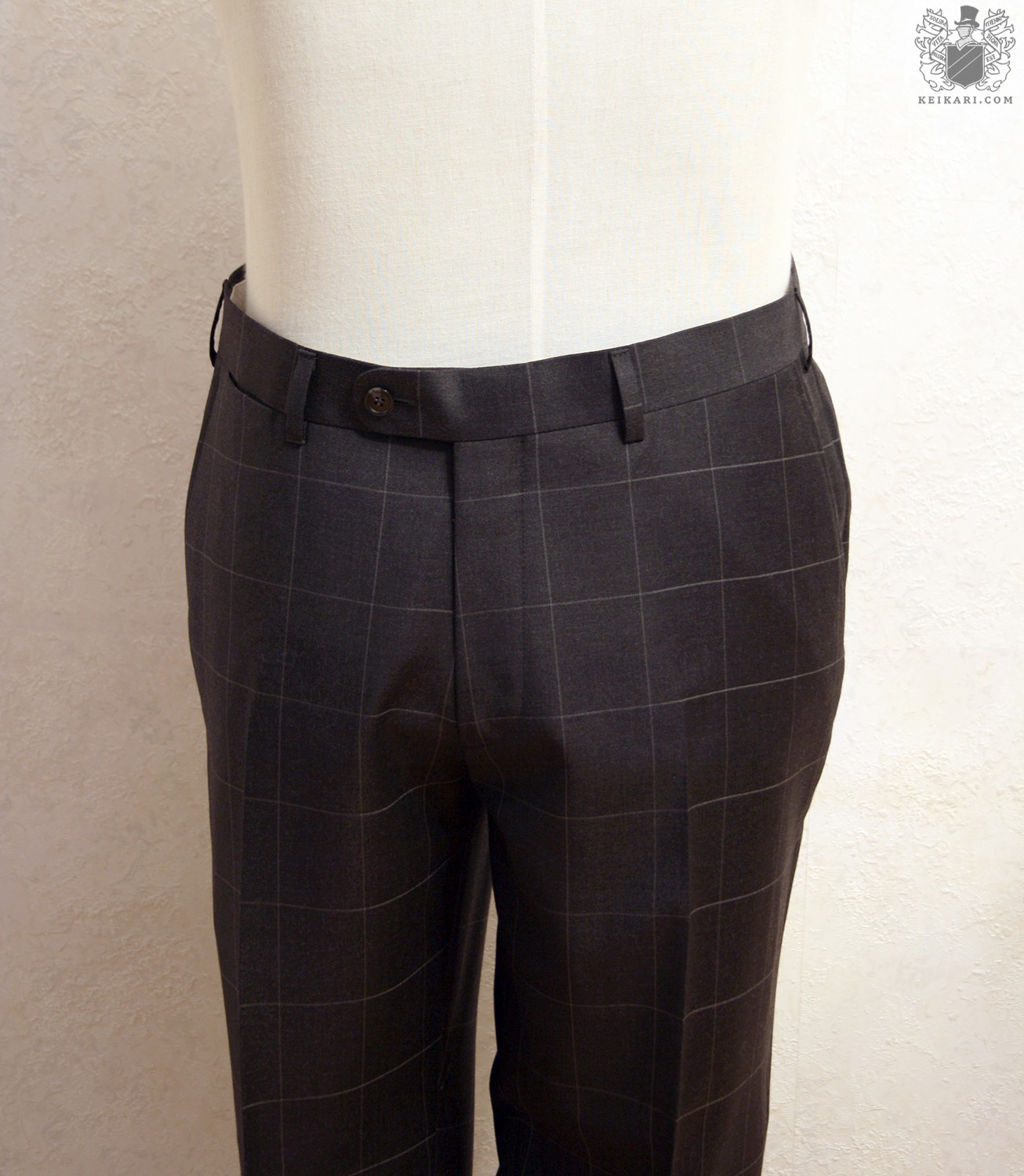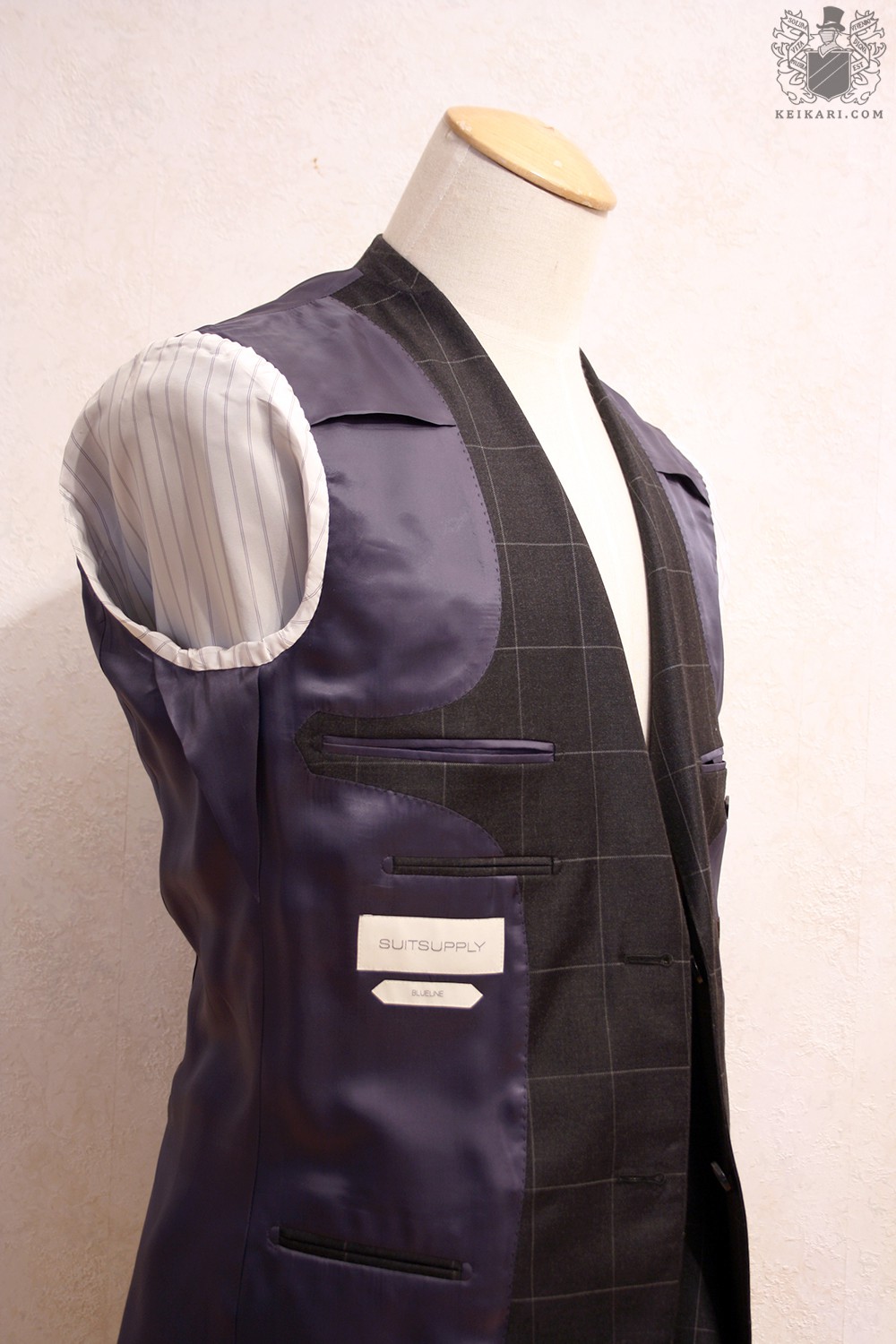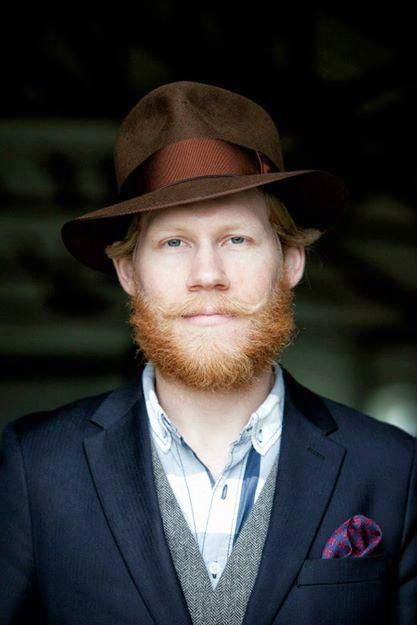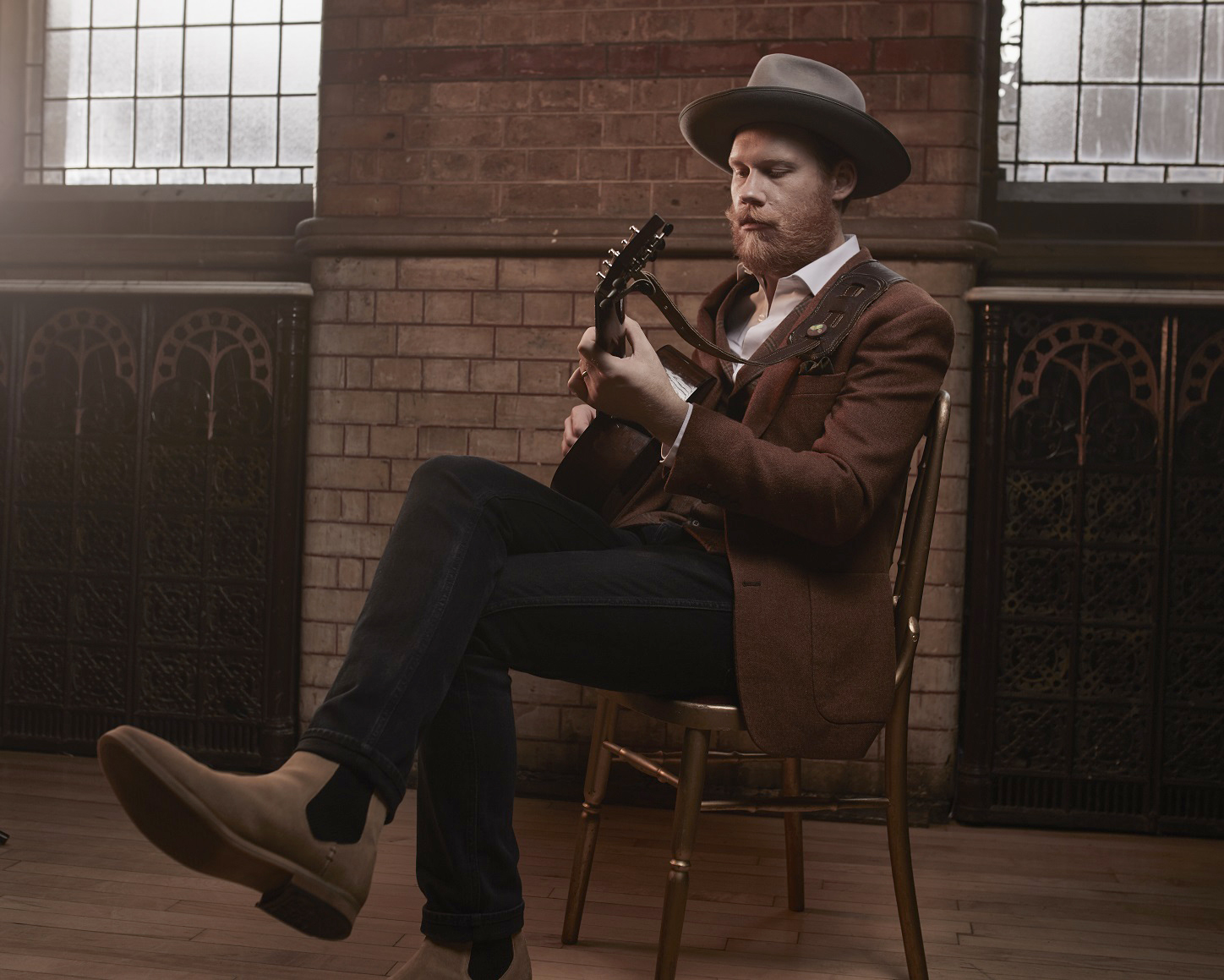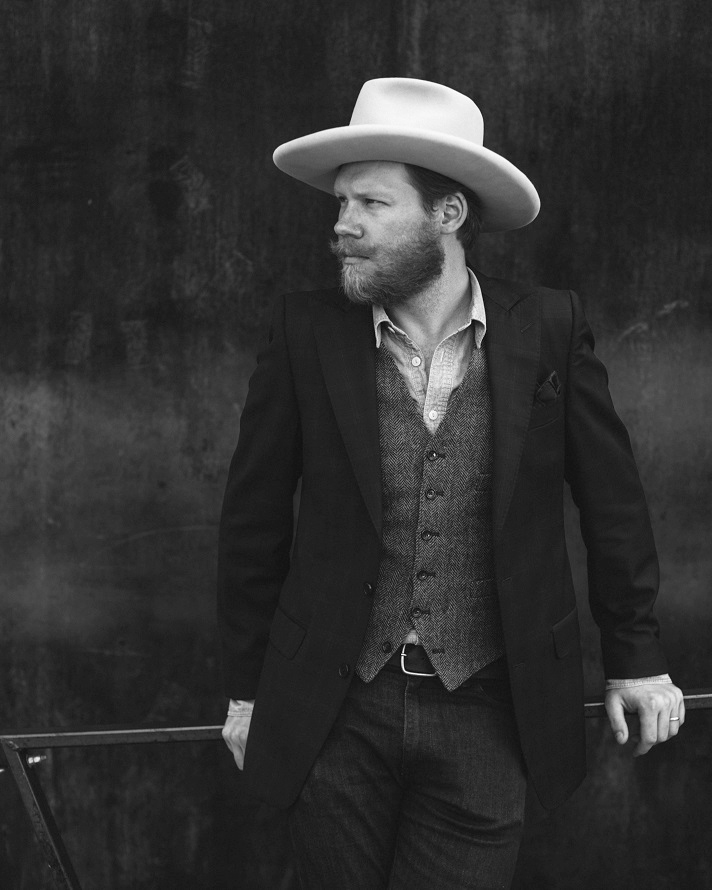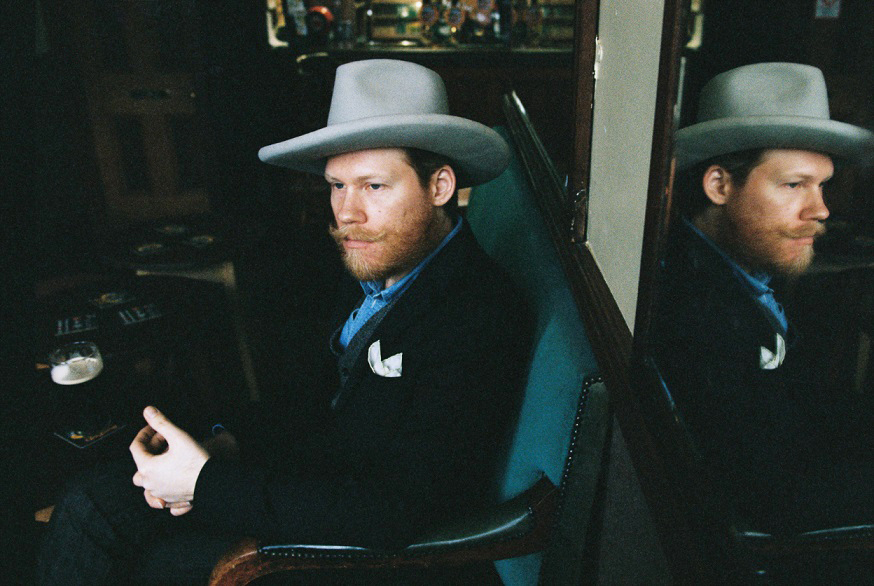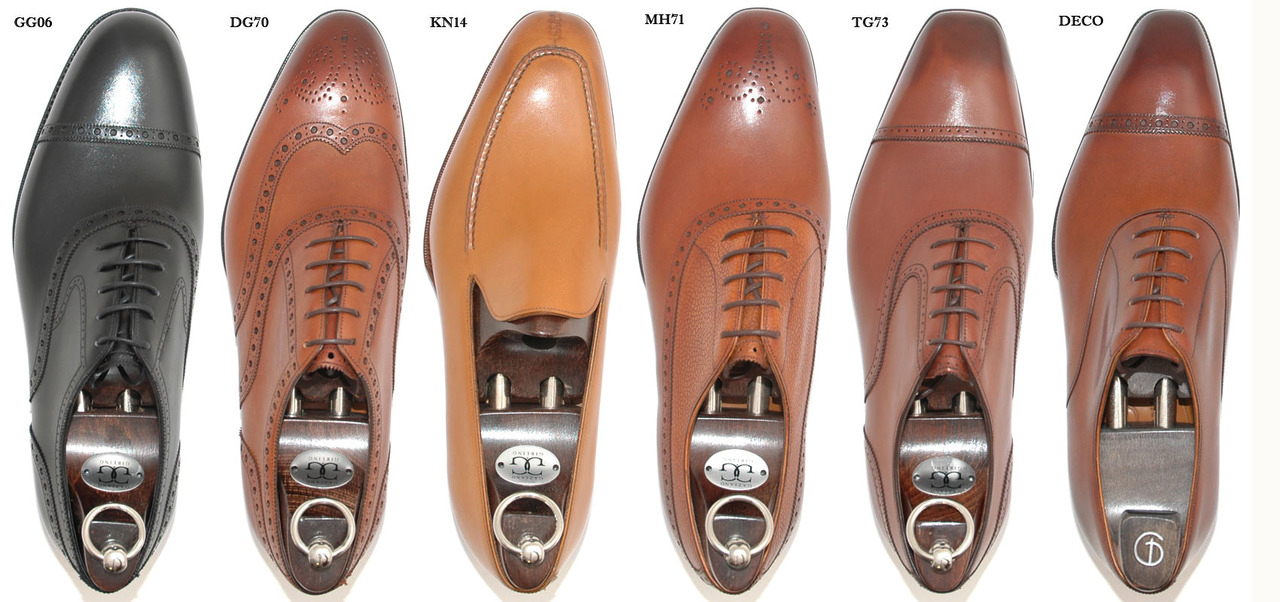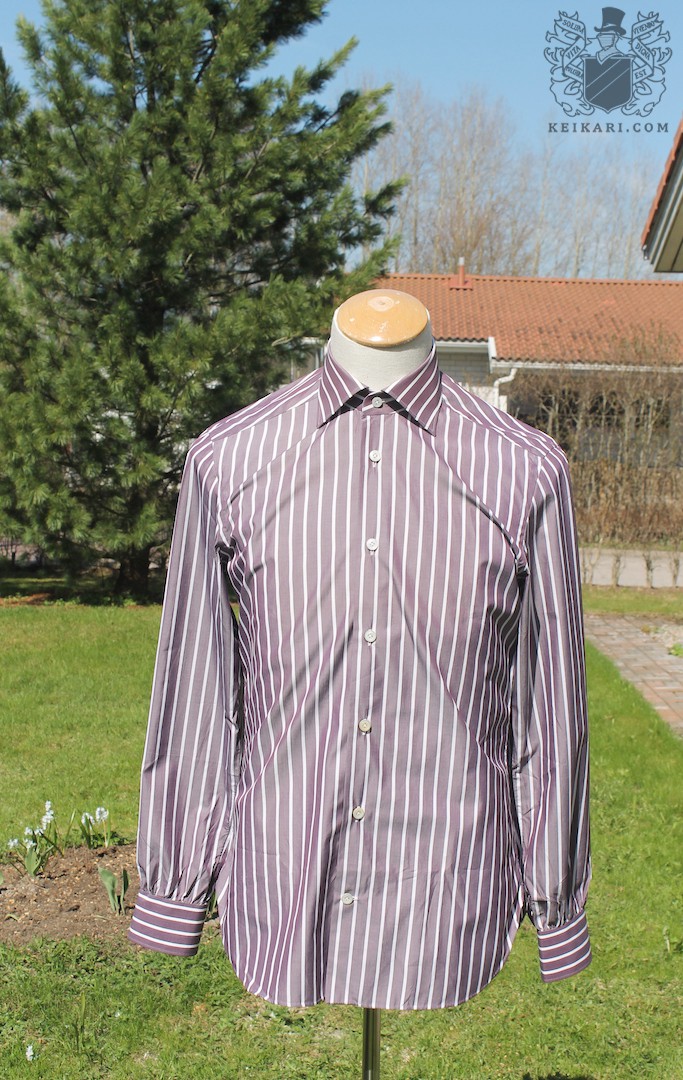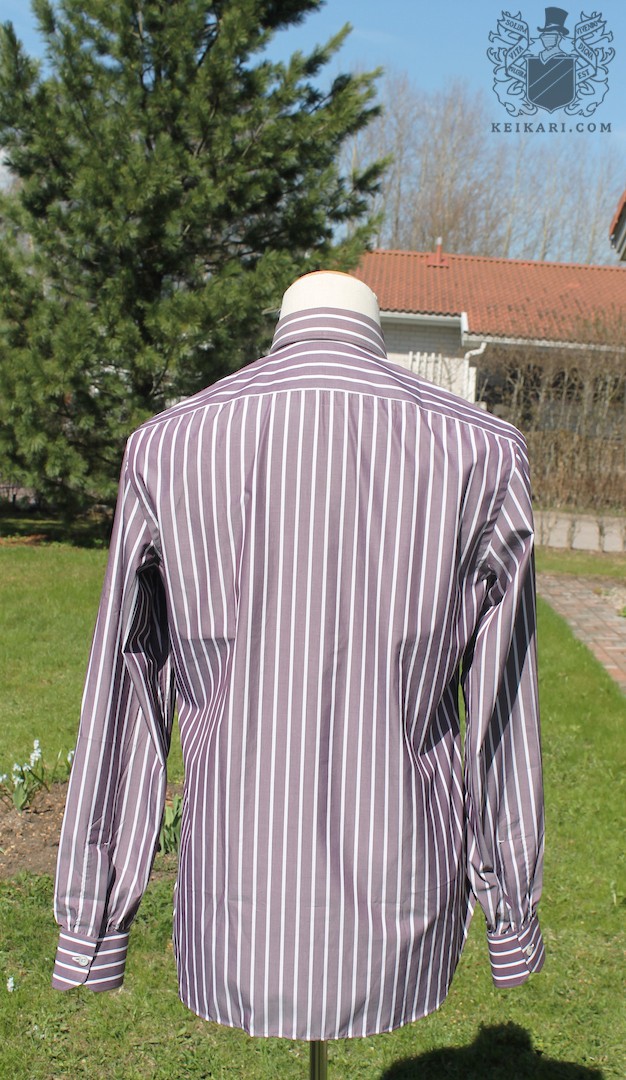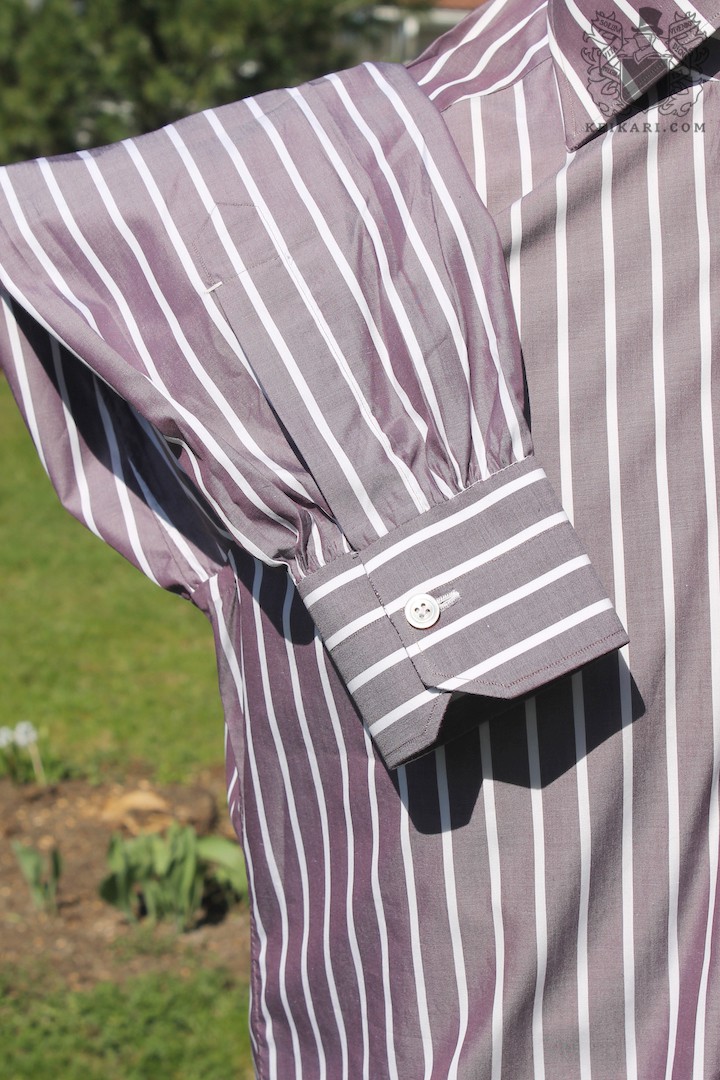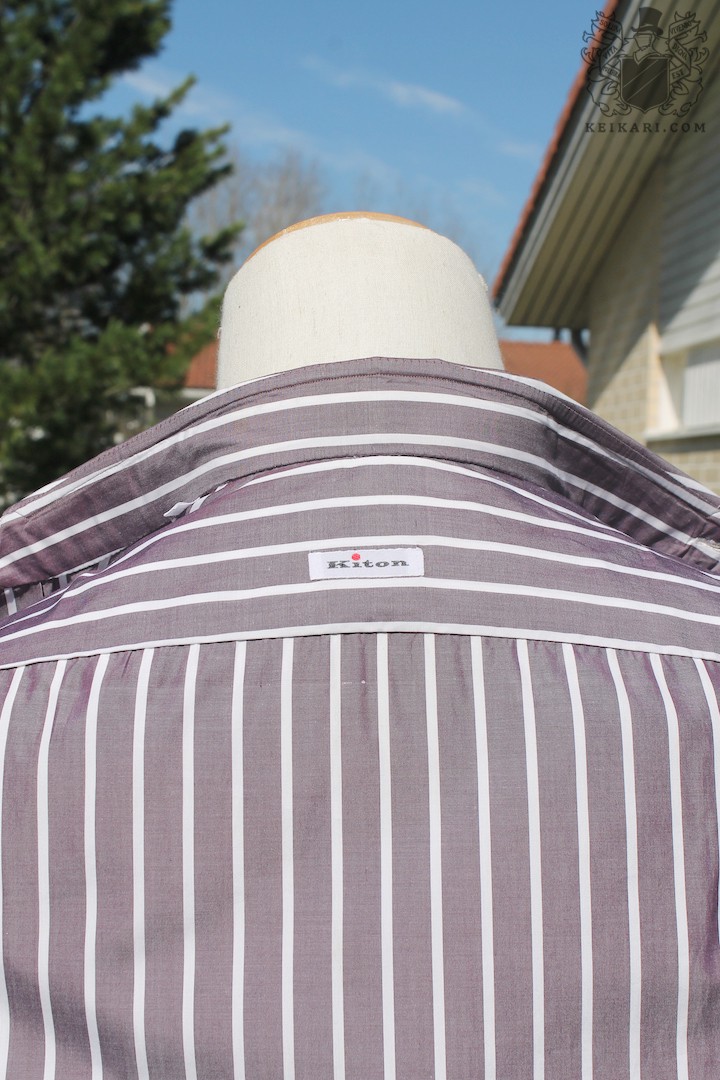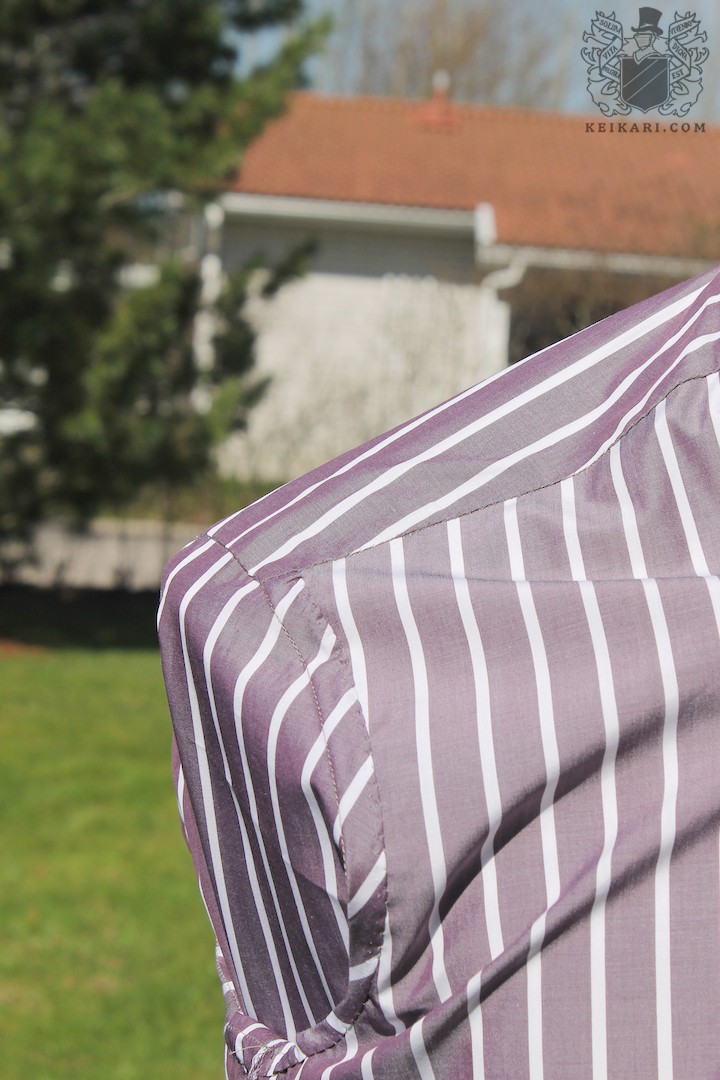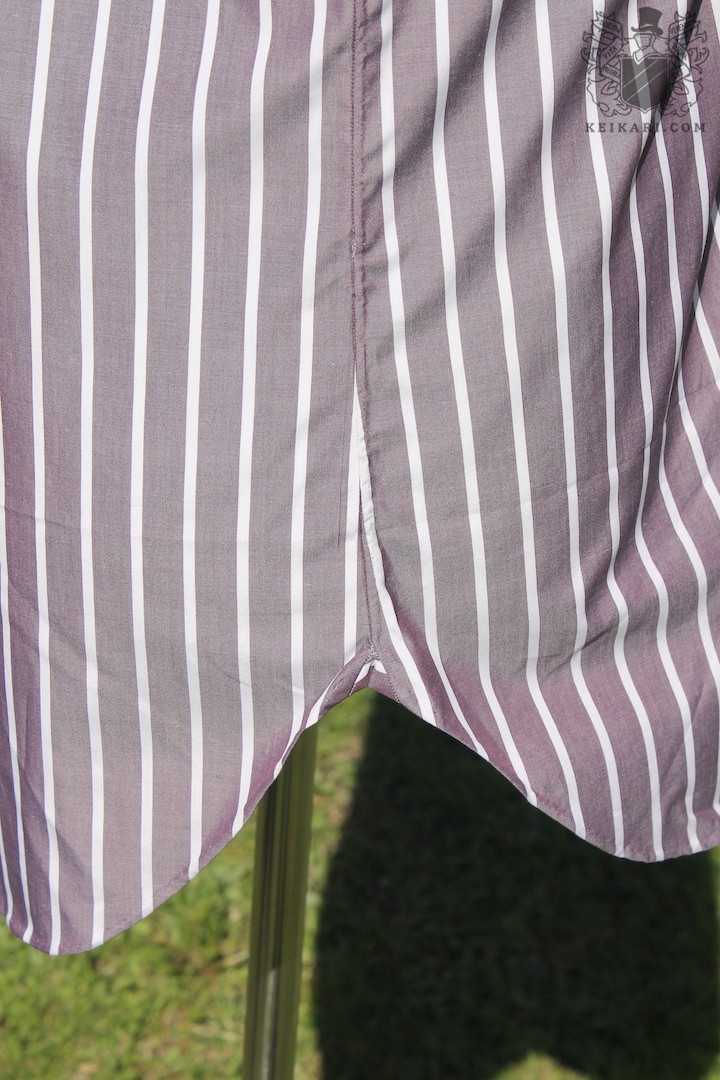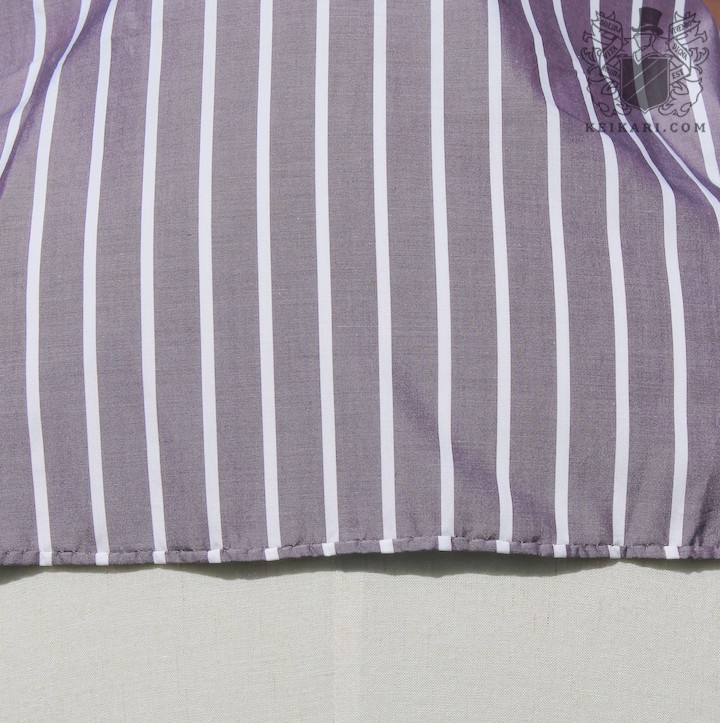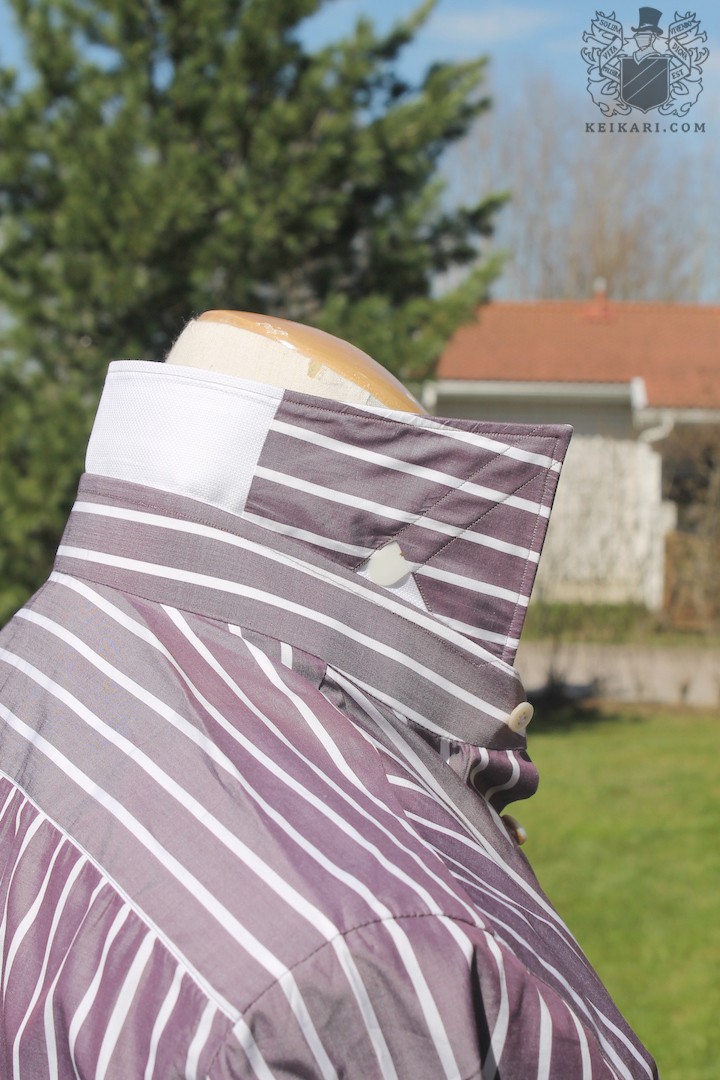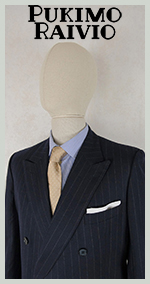Anatomy of a Suitsupply suit
0May 21, 2018 by Ville Raivio
Suitsupply is a European men’s clothier, founded in 2000, with a peculiar take on its field. The company distinguishes itself most by offering a great deal. This price-quality maven uses European cloths from renowned mills — such as Vitale Barberis Canonico, Spence Bryson, Ormezza, E. Thomas, Angelico, Carlo Barbera, Ferla — and favours many details as well as slim cuts but sells the clothing at affordable prices. The SS cloth selections from these mills differ in their colours and patterns from most suit companies. Besides the usual understated, dark suitings SS chooses strong checks or unusual colours, like bottle green or very dark red, every season.
The SS suits cost 299 euros at their lowest and the webstore offers free courier deliveries and returns. All of this is possible thanks to vertical integration. SS manufactures nearly all of its wares in their own factories, most in Portugal or China, and sells them in their own stores. All phases from make to retail are controlled in-house. The company’s advertisements, in which fully clothed men pose with near-nude young women, have been lambasted on both sides of the Atlantic. The debacle has, however, brought the company to greater knowledge. Suitsupply’s American takeover began in earnest in 2011, when Wall Street magazine published an article where menswear experts compared several suits without maker tags. The SS suit received great praise while other, more expensive makers were told off.
Suitsupply sent a suit from their new made to order-service to Keikari’s perusal. In the MTO-program, the customer can freely choose his cloth and most details, while the cuts are limited to those used in the readymade suits. Thus, the measurements cannot be changed, but if one of the available cuts satisfies, all is well enough. The order should arrive within a month. The best sides in this service are the details and, most of all, the cloth. The example is a three-piece Lazio-cut suit with extra trousers, made from VBC’s dark grey worsted wool, featuring a light windowpane pattern. Comparing the two trousers shows a difference of a few centimetres between them, otherwise the jacket and trousers fit similarly to a Lazio-cut dinner suit already in my wardrobe. The suit has a decorative pick-stitched lapped construction on nearly all seams, a detail that very few makers use in off-the-peg clothing. The cloth feels smooth and pleasant, with a straight drape despite the lighter weight. The buttonholes are straight and clean, the suit has no loose threads around it.
The buttons are plastic but have a varied colour. The cloth patterns are cleanly matched, only the underside of the collar is a centimetre off. The one downside I find is the very form-fitting cut of the trousers. If one enjoys having a bit of room, let use say, around the crotch, the only way is to choose a size bigger and have it taken in at the waist. The trouser waist is fairly low as well. The Lazio-cut has a thicker shoulder structure, but the SS version feels fairly light on all models. The note-worthy points with this suit are the high gorge, straight and angled lapels, the slim fit, clean finish, and the nicely rounded open quarters. Together these combine into a cut that is far from boring.
This presentation is easy to end, as most of my jackets and suits are already from Suitsupply. Besides their trousers, jackets, and suits I dare to recommend the collar shirts as these often feature high-grade European fabrics, and the cuts are slim. I have owned and used suits twice the price of what SS asks, and I’ve rarely found a similar combination of cloth, finishing, cut, details, and price. If one finds a suitable cut from the Suitsupply range, the door towards style opens with ease.
Category Quality makers, Suits, Web stores
Interview with Jarrod Dickenson
0May 15, 2018 by Ville Raivio
VR: Your age and occupation?
JD: I am 32 years old, and I’m a singer, songwriter, touring and recording artist. In other words, I write songs and travel the world singing them to anyone who’ll listen.
VR: Your educational background?
JD: I attended the University of Texas in Austin, and received my Bachelor’s degree in Communications. My particular major studied the communication patterns within interpersonal relationships; be it professional, romantic or family/friend relationships.
VR: Have you any children or spouse (and how do they relate to your tailoring enthusiasm)?
JD: I was fortunate enough to marry a brilliant, talented and stylish woman from Belfast, Northern Ireland. She has an excellent eye for clothing and style.
VR: …and your parent’s and siblings’ reactions to style back in the days when you began?
JD: Well, I’m from a medium-sized city in Central Texas, so the common style of dress is very casual. If you wear a nice jacket or waistcoat or hat you certainly stick out. Therefore, when I started taking a greater interest in how I presented myself from a clothing and style standpoint I most definitely stuck out! There was never any push-back from my family; more just playful jabs here and there.
VR: What other hobbies or passions do you have besides apparel?
JD: Music would be my main passion in life. Writing songs, making records and performing live is what gets me up in the morning.
VR: How did you first become interested in clothing, and when did you turn your eyes towards the tailored look?
JD: Old movies and photographs of my grandfather were probably the biggest factors in my becoming interested in tailored fashion. My grandfather looked like a movie star in his younger days; razor-sharp suits and a fine felt hat cocked at just the right angle. He looked like he could have co-starred next to Humphrey Bogart or Jimmy Stewart. I loved the way his generation dressed, and at that time it was radically different from how everyone around me dressed, so I was drawn to it even more. I wanted to be different. I wanted to stand out, and looking like Bogie or Sinatra or indeed my grandfather seemed like the coolest, classiest form of rebellion toward the current norm I could think of.
VR: How have you gathered your knowledge of clothing — from books, in-house training, workshops or somewhere else?
JD: Any knowledge I possess has come from observing others. Living in New York City played a big part in this. A lot of people in that city take great pride in how they look, so seeing people on the streets and in the subways would give me ideas and inspiration as I crafted my own style.
VR: How would you describe your own dress?
JD: Sharp, classic with a touch of rock-and-roll.
VR: Who or what inspires you?
JD: My style, much like my music is constantly evolving. The more you see, the more you learn. The more you learn, the more you evolve. I’m inspired by any number of things; music, literature, random strangers on the street…I try to take it all in.
VR: What’s your definition of style?
JD: I think style is simply the outward manifestation of one’s own unique personality.
VR: Finally, I’ve heard that you even source vintage cloths for custom garments. What lead you to this route and why do you walk this extra mile?
JD: I have a few great vintage pieces that I’ve picked up over the years, but the vast majority of my wardrobe is modern, though often leaning toward a vintage or classic look.
Category Interviews, Men of style, Vintage
Gaziano&Girling last shapes
0May 10, 2018 by Ville Raivio
Collage courtesy of Bespoke-England, sadly defunct now, for illustration and web store shopping purposes.
Category Footwear, Northampton
Anatomy of a Kiton shirt
0May 7, 2018 by Ville Raivio
“ll meglio del meglio più uno“ or The best of the best +1 is the slogan of Kiton, that Neapolitan tailoring factory with the red dot logo. Their shirts take 22 steps to make, nearly everything is sewn by hand, and they allow some six hours of production time for each shirt. This is more than any other shirtmaker I know of. Only the edges of cuffs and collars, and the side seams on the sleeves and body are sewn by machine. This ensures clean lines, but those side seams are afterwards hand-sewn for decoration. The most time-consuming point, I wager, is the hem that’s folded and sewn like the edges of artisanal handkerchiefs. I also wager that Kiton sees this effort because they can, and because most companies won’t bother. The shirtings of choice for Kiton’s shirts are woven by Carlo Riva, a tiny shuttle loom operation in Como. Legends have it that Riva allows their finished fabrics, which are not treated with chemicals, to set for a year in store before they’re sold. It was finally time to see what the fuss was about with an example shirt from Naples.
The shirt’s fabric feels extremely silky, light, smooth, soft, and looks translucent. If handled blind-folded, I would likely say it has plenty of silk woven in — but no, all’s cotton that glitters here. This is the Riva way. For whatever reason, the wash tag states that the shirt can handle 60 C washing, which is rare to see. The cut is a standard one, not as close as what Turnbull&Asser offers but not one of the sailcloth shirts called “traditional” cut. The chest measurement per side is 59 cm, and the sleeve on the bicep is 19 cm per side on a size 39 shirt. Another detail I haven’t seen from other makers: the body’s pattern curves inwards on the waist. Nearly every maker cuts a straight body. The notched button cuffs are shirred cleanly. The shirt has no placket, the wide buttons are sewn with that decorative Neapolitan chicken foot -stitch. The buttonholes are minutely fine and dense, the folded hem is as well superbly clean and tightly sewn. The yoke is, surprisingly, only a single piece instead of the usual double.
The stripe fabric is cleanly matched on the cuffs but not so where the left shoulder meets the sleeve, far from it. The collar’s back height is 4 cm and point length 9 cm, enough to make it stand out among a sea of boring collars. It’s fused and light, and the two-part collar is hand-sewn on both seams — something I haven’t seen from other makers. Supposedly it ensures that the collar never collapses, even when worn without a tie. Its backside and points feature oxford cotton contrast lining, a nice add of colour that no one will see. The mother-of-pearl buttons are undyed, flat but wide. It remains to be seen how well all this hand-sewing holds up with wear and washes, but Kiton’s artisans really do shine in their work. All stitching is only some 4 mm apart, straight, with tiny picks visible, a time-consuming choice that calls for a steady eye and hand.
Kiton shirts retail for some 400 euros in Europe. This is a grand sum, more so as one can get two bespoke shirts for the price of a single readymade piece. Thus, it is difficult to justify one of these as a shirt…but rather as an example of artisanal craft at its finest. One does not simply get a Kiton shirt because it’s reasonable. The fabric, the components, the shape of the collar, the fineness of the sewing — all appear to be among the highest quality available.
Category Naples, Reviews, Shirts
Keikari has returned to Facebook
0April 21, 2018 by Ville Raivio
After a short break, Keikari has returned to Facebook. There I will share more or less inspiring style photos as before — no ads or bullshit.
Category Links
Copyright © 2013 Ville Raivio

